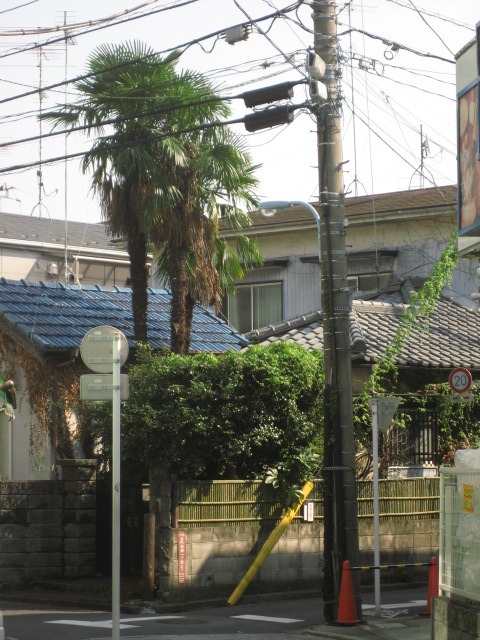
ほとんどの外国人は、ヤシの木とイチョウの落ち葉の組み合わせを日本の秋の風景とは想像しません。
Tokyo palm trees with ginko leaves are not most foreigners’ image of the typical Japanese fall landscape.
I love this juxtaposition of Tokyo’s most common, self-seeding palm tree named Shuro (シュロ, or Trachycarpus fortunei) and fallen yellow ginko leaves. Most people think of fall as defined by maple leaves turning red, or winter as pine trees. This unexpected combination of ginko and palm is an alternative juxtaposition of deciduous and evergreen.
This photo is from “Shuro hill” at Tokyo’s oldest Japanese garden, Koishikawa Korakuen (小石川小楽園), created in the early Edo period by the second Tokugawa ruler. This area is also called “Kiso yama,”with the mountain, path, and stream designed to evoke the Kyoto highway. This is but one of many garden scenes that miniaturize famous places in Japan and China. My appreciation of this garden is indebted to the passion and knowledge shared by my professor Suzuki Makoto who gives the most extraordinary tour.


This last image shows the juxtaposition between this nearly 400 year old garden and modern Tokyo. In the background are Tokyo Dome (right) and the Bunkyo ward office (left). Many of the garden structures were destroyed during the 1945 fire-bombing of Tokyo, and the garden reduced in size by post-war development.
Despite its abbreviated size, the garden is large enough that only later did I realize I forgot to see the rice paddy on the north side. The loud bird cries indicate that this garden is a critical nature sanctuary in a crowded city.

